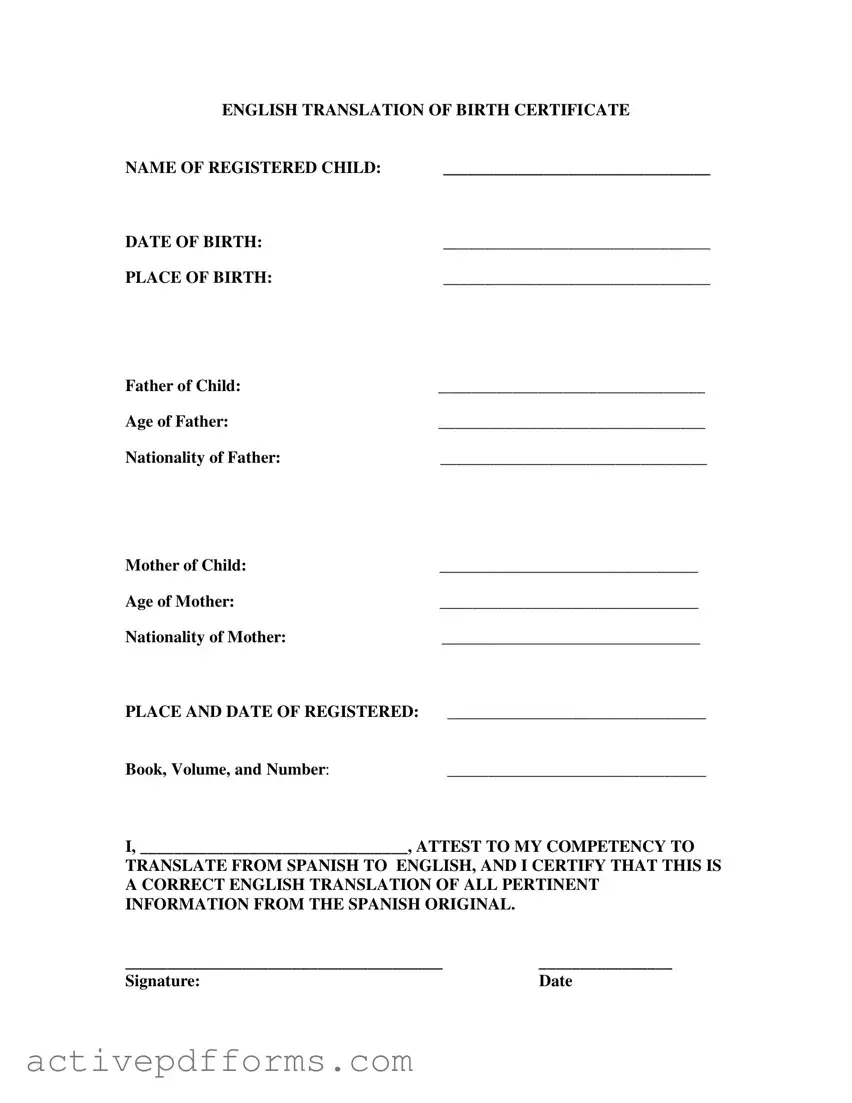Free Birth Certificate Translation To English PDF Template
The Birth Certificate Translation To English form serves as a critical document for accurately translating the details of a birth certificate from Spanish to English. This form ensures that all pertinent information regarding the birth of an individual, including personal and parental details, is translated correctly and officially. It is essential for various legal, educational, and personal matters that require an accurate record of an individual's birth information in English.
Edit Birth Certificate Translation To English Now
